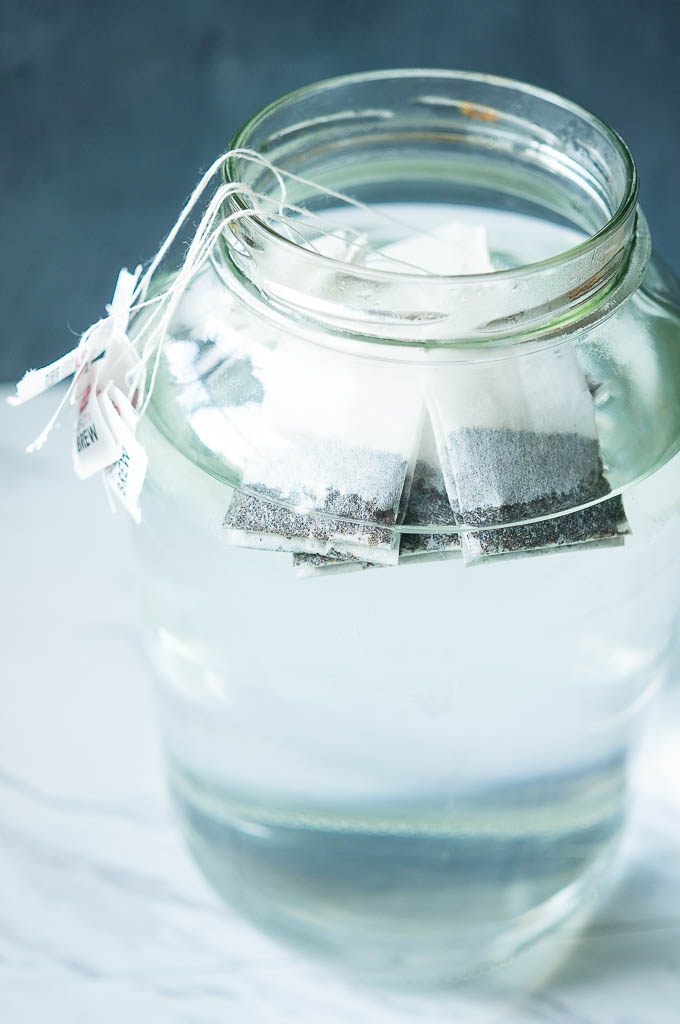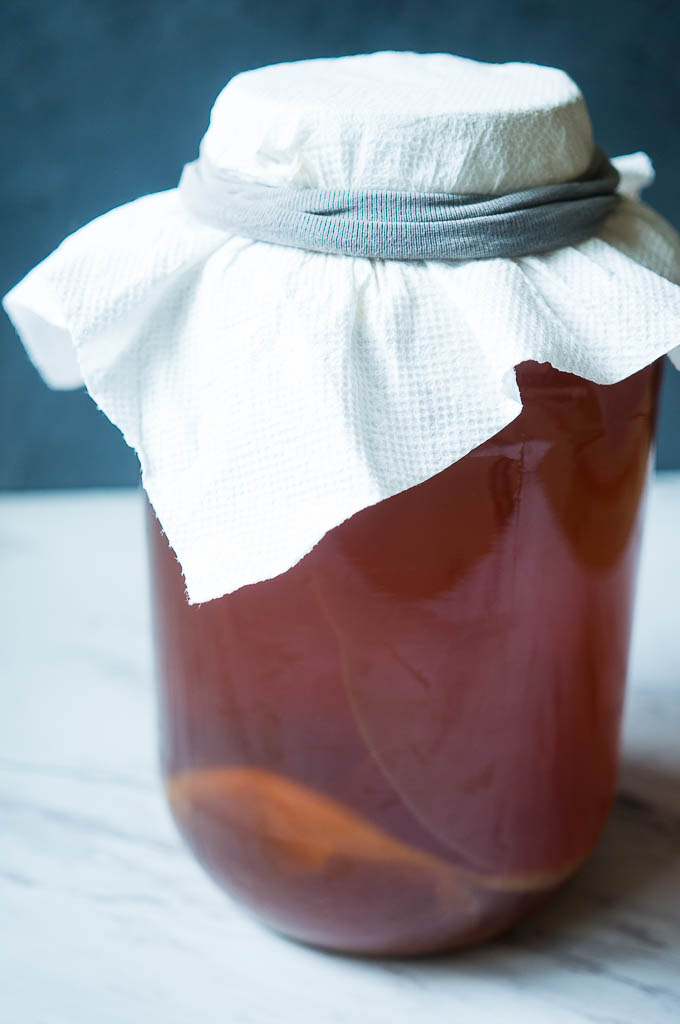 Beverages
Beverages
◦

I started making kombucha about five months ago and have since become really intrigued about the process. It seems so mystical to create a bubbly, probiotic tea out of water, sugar, and black tea bags. For those of you who have no idea what I’m talking about, kombucha is a healthy beverage that can be produced by fermenting sweet tea with a culture of yeast and bacteria. The culture is called a “scoby”, but we’ll get to more of that later.
Kombucha has been found to have many health benefits, including aiding with digestion, immune support, detoxification, increased energy, possible weight loss, and a handful more. Personally, when I’m drinking a glass per day, I notice a boost of energy, my face really clears up, my stomach doesn’t have any issues, and my overall well-being seems much better. I have a friend who used to be an elementary school teacher and I remember her saying that she would get sick so often from the kids in her classroom, but one year she started making and drinking a glass of kombucha a day, and never got sick! Pretty amazing!
It took me awhile to get into the game of brewing my own kombucha, because it always seemed so intimidating to me. The first few times were a bit overwhelming, but it’s because I was never able to find clearly written, easy to understand instructions. It turns out, it’s actually a really easy process – nothing to be scared of at all!
Okay, let’s get started.
First, you’re going to need a large gallon glass jar. I bought a jar of pickles from the grocery store, removed the label, cleaned out the jar, and called it good! This one is a good option as well.
Step #1: Boil 14 cups of water and pour into gallon jar. Add 8 black tea bags (once you get the process down, you can branch out to other kinds of tea) and 1 cup of white granulated sugar. Stir to dissolve the sugar, then let cool completely. If you want to speed up the process, place in your fridge.


Step #2: Once the tea has completely cooled, remove the tea bags, add your scoby (if you add your scoby and the tea is still warm, you risk the chance of killing your scoby) and 2 cups of already brewed kombucha. If this is your first batch, you can add store-bought plain kombucha, then once you’ve brewed your first batch, you can reserve 2 cups to use in your next batch.

Step #3: Cover your kombucha with a few layers of paper towels, coffee filters, or very tightly woven cloth. Make sure covering is tight, then secure with a rubber band. Set jar somewhere out of the way, out of direct sunlight, and in a spot that will maintain an even temperature.

Step #4: When your tea has been sitting for 7 days, taste a little bit of the kombucha by sticking a straw down past the scoby, and taking a few sips. From this point on, your tea will be ready, but you can continue to let it sit longer, depending on how vinegary tasting you would like it to be.
Step #5: When your kombucha has reached your desired taste, remove the scoby from your jar along with 2 cups of kombucha for your next brew, and set aside. Pour the remaining kombucha into glass swing top bottles or other glass jars or bottles you may have sitting around. The bottles must be tightly sealed, which is why the swing top seem to work the best.

Step #6: If you would like to add any flavoring (fruit juice, herbs, spices, etc.,), add them into your bottles at this point. Store the bottled kombucha out of direct sunlight for 1-3 days to carbonate. Before you are familiar with how long this process takes, I would recommend opening a bottle at 1, 2, and 3 days, to see how the carbonation level is. When you feel it’s adequately fizzy, place the bottles in the fridge to stop carbonation.

The last step is to enjoy your kombucha sometime in the next 30 days!
Okay, I know what some of you are thinking. What the heck is a scoby and how the heck do I get one? Calm down people, I’m getting there!
A scoby is a flat, slimy, living creature that gets deposited into your tea, eats all the sugar (because it’s an addict), and then feels bad about it so he decides to leave you some delicious fermented tea as an apology.
I’m kinda sorta kidding about that, but it’s also almost accurate. Haha. Actually, a SCOBY is a Symbiotic Culture of Bacteria and Yeast. In other words, it’s a colony that is essential to the well-being of your kombucha production. It’s the gas in the car, the electricity for your hairdryer, the baking soda in your cookies. You get it!

So, if you don’t already have a living scoby, there are a few ways to go about getting one.
#1. You can buy it. I know that seems weird, but many local health food stores sell them or you can even get one on Amazon!
#2. You can ask around for one. I had a friend who brewed her own kombucha, so I asked her for one. Once you start to make a few batches per month, you’ll learn that your scoby grows a new layer with every batch, so if you have a friend who brews, they can peel a layer off their scoby and give it to you to start your own!
#3. You can grow your own from scratch. To do this, you’ll need to purchase a bottle of raw, unflavored kombucha, pour it into a jar with one cup of black tea mixed with 2 tablespoons of sugar, cover it using the same methods as above, then let it sit for 2-4 weeks until your scoby reaches a thickness of 1/4 inch. If you use that method, you can use the tea your scoby was sitting in as the starter for your first batch!
That’s all! You can totally do this!
If you’re wanting to start your kombucha journey, but feel like you still need some guidance, please don’t hesitate to comment below or contact me at [email protected]
Print